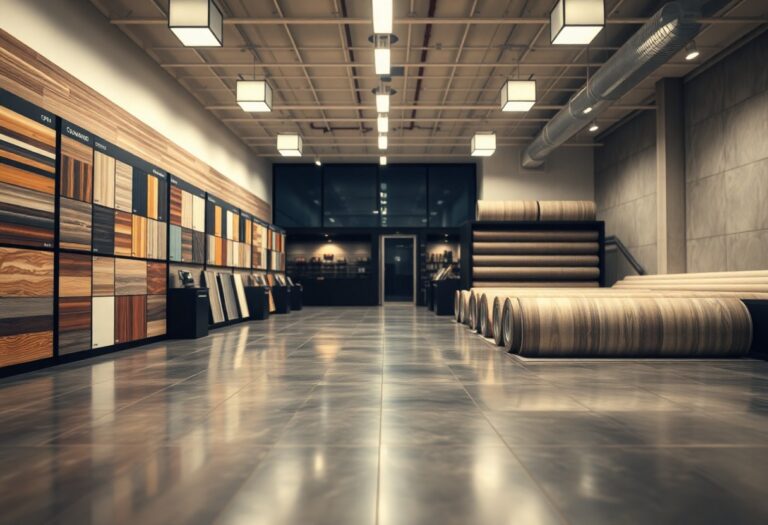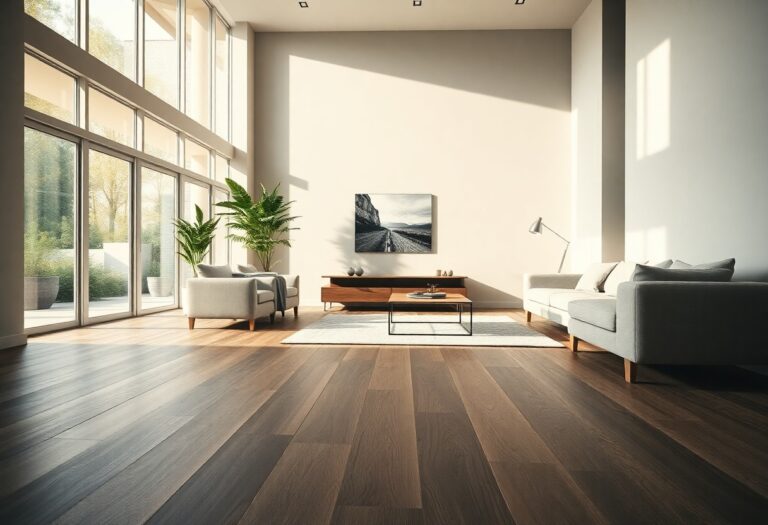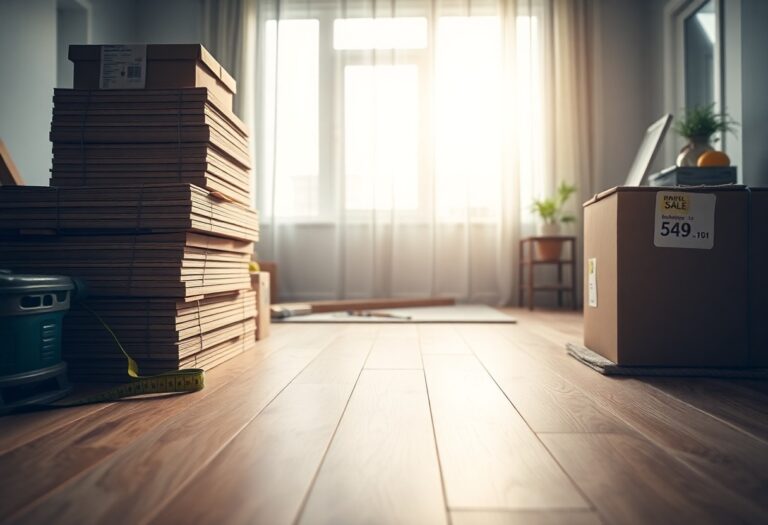This guide equips you with crucial knowledge about waterproof laminate flooring, helping you make informed decisions for your home. As a homeowner, you’ll discover the benefits, installation tips, and maintenance strategies to ensure your flooring withstands moisture and everyday wear. Learn how to choose the right product that fits your aesthetic and practical needs, while enjoying the cost-effective advantages of this durable flooring option.
Types of Waterproof Laminate Flooring
Various types of waterproof laminate flooring cater to different needs and preferences. Knowing your options will help you choose the best fit for your home. Each type offers unique features, so consider the level of moisture exposure and the room’s usage before making a selection.
- Traditional Waterproof Laminate
- Enhanced Water-Resistant Options
- Rigid Core Laminate
- Vinyl-Infused Laminate
- Waterproof Laminate with Attached Pad
The right choice can significantly affect durability and maintenance.
| Type | Features |
| Traditional Waterproof Laminate | Made with a water-resistant core, ideal for wet areas. |
| Enhanced Water-Resistant Options | Improved moisture protection and wear layer for high-traffic zones. |
| Rigid Core Laminate | Stable and impact-resistant, suitable for uneven surfaces. |
| Vinyl-Infused Laminate | Combines laminate with vinyl for exceptional water resistance. |
| Waterproof Laminate with Attached Pad | Simplifies installation, adding noise reduction and insulation. |
Traditional Waterproof Laminate
This type is designed with a water-resistant core that prevents moisture from seeping in, making it a solid choice for kitchens, bathrooms, and basements. You’ll find that installing traditional waterproof laminate can be straightforward, as it is often available in click-lock designs that simplify the process.
Enhanced Water-Resistant Options
Enhanced water-resistant laminates offer superior moisture protection through advanced technology and additional wear layers. These options can withstand spills and humidity better than traditional varieties, making them ideal for high-traffic areas or households with children and pets.
These enhanced options typically incorporate features like a thicker wear layer and specialized coatings that repel moisture. Certain brands offer a water-resistant rating that guarantees performance in wet conditions, ensuring your flooring maintains its appearance and structural integrity over time. Choosing enhanced water-resistant laminates can lead to a longer lifespan and reduced maintenance in moisture-prone environments.
Factors to Consider When Choosing
Selecting the right waterproof laminate flooring requires a thoughtful evaluation of various elements that can impact your home’s functionality and aesthetic appeal.
- Moisture levels in your environment
- Your style and aesthetic preferences
- Durability and wear rating
- Installation method
- Budget and cost considerations
The right choice can enhance both the beauty and longevity of your flooring.
Moisture Levels in Your Home
Assessing the moisture levels in your home is vital for selecting appropriate waterproof laminate. High humidity areas like basements or kitchens require flooring specifically designed to withstand excess dampness, preventing warping and damage over time.
Style and Aesthetic Preferences
Your personal style significantly influences the choice of laminate flooring. Whether you prefer a contemporary look, rustic charm, or classic elegance, laminate offers a wide range of designs, textures, and colors. Popular choices include wood-look finishes, tile patterns, and even bold colors to complement your decor.
Consider how different styles align with your furnishings and wall colors. If you’re aiming for a cohesive and inviting atmosphere, choosing laminate that mirrors the existing elements can help create a harmonious flow throughout your space. For instance, rustic wood finishes can enhance a cozy, farmhouse aesthetic, while sleek tiles may suit modern interiors better. Prioritize your preferred aesthetic while balancing it with durability and maintenance needs to ensure long-lasting satisfaction with your flooring choice.

Pros and Cons of Waterproof Laminate Flooring
Pros and Cons
| Pros | Cons |
|---|---|
| Water-resistant and durable | Can be more expensive than regular laminate |
| Easy to install | Can warp if not properly installed |
| Low maintenance | Limited lifespan compared to hardwood |
| Variety of styles and finishes | May produce hollow sounds underfoot |
| Resistant to stains and scratches | Not as eco-friendly as other flooring options |
Advantages
Waterproof laminate flooring offers significant advantages, making it a popular choice among homeowners. Its water resistance allows installation in moisture-prone areas like kitchens and bathrooms without the risk of damage. It’s durable, handling heavy foot traffic well, and available in a myriad of styles. Furthermore, maintenance is straightforward, requiring only regular sweeping and occasional mopping to keep it looking pristine. Easy installation options such as click-lock systems also enhance its appeal, enabling DIY enthusiasts to save on labor costs.
Disadvantages
Despite its benefits, waterproof laminate flooring isn’t without drawbacks. The initial investment can be higher than that of traditional laminate, which may deter budget-conscious homeowners. Although designed to withstand moisture, improper installation can lead to warping, reducing its longevity. The aesthetic appeal of waterproof laminate might not always match that of genuine hardwood, as it lacks the natural variations of wood grain. Additionally, some designs can produce a hollow sound underfoot, which may be unappealing in large, open spaces.
In terms of lifespan, waterproof laminate flooring often cannot compete with solid hardwood, typically lasting about 15-25 years, whereas hardwood can last for generations with proper care. This difference can impact your long-term investment considerations. Moreover, its manufacturing process sometimes involves materials that are less eco-friendly compared to more sustainable flooring options, potentially affecting environmental impact. Balancing these factors is necessary in determining if waterproof laminate fits your home’s needs.
Installation Tips for Waterproof Laminate
Installing waterproof laminate flooring requires attention to detail to achieve optimal results. Follow these tips to ensure a smooth installation process:
- Gather all necessary tools before starting.
- Review the manufacturer’s installation guide for specific requirements.
- Ensure adequate lighting in your workspace.
- Make precise cuts with a quality saw.
- Use spacers to maintain expansion gaps along the walls.
Any oversight can affect the lifespan and appearance of your flooring.
Preparing Your Subfloor
A clean, dry, and level subfloor is vital for a successful laminate flooring installation. Remove any debris, old flooring, or carpeting, and check for moisture issues that could damage the laminate over time. Use leveling compounds for uneven areas, and allow the surface to dry completely before starting the installation.
Acclimating Your Flooring
Acclimation is key to preventing future warping or buckling of your waterproof laminate. Allow the flooring to sit in the room where it will be installed for at least 48 hours. This allows the laminate planks to adjust to the temperature and humidity levels, promoting better expansion and contraction during changes in your home’s environment.
Your laminate should remain in its packaging until you’re ready to install it to maintain its acclimation state. Store it in a climate-controlled area to avoid exposure to extreme temperatures or moisture. During the acclimation period, it is beneficial to measure your room’s humidity and temperature, aiming for 60-80°F and 30-50% humidity, as these conditions create the ideal environment for the flooring to adjust properly.
Step-by-Step Installation Guide
| Preparation | Clear the area, ensure the subfloor is dry, clean, and level. |
| Tools | Gather necessary tools such as a saw, tapping block, and spacers. |
| First Row Placement | Begin laying planks from a corner, using spacers to maintain gaps. |
| Subsequent Rows | Stagger the seams of each row by 6-12 inches for stability. |
| Finishing Touches | Install transitions and baseboards, ensuring a polished look. |
Tools and Materials Needed
You’ll need important tools such as a circular saw for cutting, a tapping block for secure connections, spacers for maintaining expansion gaps, and a measuring tape for precision. Additionally, gather necessary materials including underlayment, waterproof laminate planks, and any trim pieces to finish the edges of your flooring.
Installation Process
The installation process begins with preparing your space, followed by laying the underlayment to create a moisture barrier and cushioning. Once the first row is set, ensure you stagger joints in subsequent rows for a professional finish. Complete the installation by adding trim to cover expansion gaps and enhance aesthetics.
Lay down the planks starting from one wall, using spacers to keep an even gap along the edges for expansion. Connect each plank using the click-lock system, ensuring they fit snugly without gaps. If you encounter door frames or corners, cutting the planks to fit may be necessary. Following this method not only speeds up the process but also guarantees that your waterproof laminate flooring will maintain its integrity and appearance for years to come.
Maintenance Tips for Longevity
To ensure your waterproof laminate flooring serves you well for years, adopt a consistent maintenance routine. This includes regular cleaning, prompt attention to spills, and avoiding excess moisture exposure. Follow these tips for lasting durability:
- Use a damp mop rather than a soaking one.
- Choose pH-balanced cleaning solutions specifically for laminate.
- Take precautions with heavy furniture by using pads or coasters.
- Inspect your flooring periodically for scratches or damage.
Any preventive care you take can enhance the lifespan of your floors significantly.
Cleaning Techniques
For routine maintenance, sweep or vacuum your laminate flooring weekly to remove dirt and debris. Use a microfiber mop slightly dampened with a laminate-specific cleaner to prevent excess moisture. This simple practice helps avoid damage while keeping your floors looking new. Do not use steam cleaners, as they can warp the material.
Preventative Measures
Taking proactive steps can significantly reduce wear and tear on your laminate flooring. Place mats at entrances to trap dirt and moisture from shoes, minimizing scratches and water damage. Consider using area rugs in high-traffic zones to provide extra protection. Keeping your pet’s nails trimmed can also prevent scratches, contributing to the overall longevity of your floors.
Regular maintenance doesn’t just prolong the life of your laminate flooring; it keeps it looking vibrant. Investing in quality mats can save you from constant cleaning and repair expenses. Additionally, be mindful of the flooring’s exposure to direct sunlight, as UV rays can cause fading over time. Consider using window treatments to mitigate this effect, ensuring your floors maintain their beauty and integrity.
To wrap up
Hence, understanding the vitals of waterproof laminate flooring empowers you to make informed decisions for your home. By considering factors such as durability, maintenance, and installation techniques, you can select the perfect flooring that meets your needs and aesthetic preferences. Embracing this modern flooring solution not only enhances your living space but also provides peace of mind against water damage, ensuring your investment stands the test of time.





